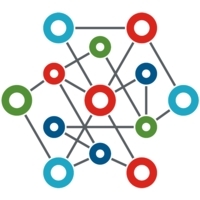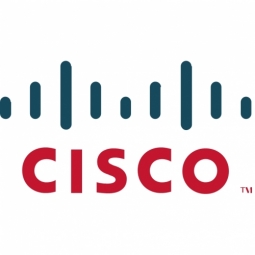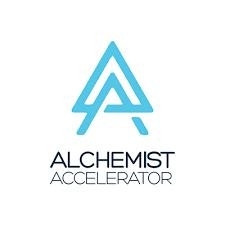-
(49)
-
(40)
-
(37)
-
(28)
-
(27)
- View all 13 Technologies
- (6)
- (4)
- (4)
- (3)
- (3)
- View all 151 Suppliers
|
PTC x IoT ONE EP050 – Machine vision and the importance of IoT data management platforms – JL Beaudoin, VP of Platforms and Innovation, Averna
Thursday, May 23, 2019
*This episode of the Industrial IoT Spotlight Podcast is sponsored by PTC.
In this episode of the IIoT Spotlight Podcast, we discuss machine vision related to core components of testing and measurement systems, and importance of IoT data management platforms.
Key Takeaways:
JL Beaudoin is the VP of Platforms & Innovation at Averna. He combines product management skills and international sales experience to spearhead innovation at Averna. He is also leading the PTC ThingWorx partnership to ensure that Averna’s customers and benefit from the flexibility and value of the platform in order to reach their goals with their industry 4.0 requirements – including real-time visibility and optimized asset management at their facilities. Averna is a Test Engineering leader, delivering innovative test expertise and quality solutions for numerous clients in wide-ranging industries around the world. https://www.averna.com/en/home/
For more information on PTC’s solutions for manufacturing, please visit: http://www.ptc.com/en/industries/manufacturing/ Read More
|
|
|
PTC x IoT ONE EP049 - How Merck uses open innovation to improve R&D efficiency – Sophie Sun, Managing Director of Innovation Hub China, Merck Group
Monday, Apr 29, 2019
*This episode of the IIoT Spotlight Podcast is sponsored by PTC. In this episode of the IIoT Spotlight Podcast, we discuss the leading digital technologies in healthcare and medical devices in China, and why open innovation makes sense for innovation in traditional and deep-science industries. Key takeaways: ⁃ Open innovation collaboration allows 3 parties to leverage each other’s strengths: Start ups strong in technology can leverage the domain knowledge of industry leaders to build out practical use cases and solutions Industry leaders can access the technological expertise of the startups The academia and government to gain practical information from private sector to guide policy and programs
⁃ Domains deeply B2B and scientifically dependent are primed for open innovation as the technology development cycle is long and expensive, so it is ideal to partner with actors who have technical or industry expertise, as it is highly expensive for any individual actor to do it on their own. ⁃ Merck’s Accelerator program focuses on engaging startups for 3 months to allow existing businesses to access technology that will be the future of these sectors. There are 3 engagement formats: incubation within the group, M&A or investment by the corporate VC program, or work together with internal R&D teams. ⁃ However, innovation programs are not enough to achieve efficiency in R&D, mindsets and skillsets of internal staff and processes need to be changed to accept and embrace new technologies and changes. ⁃ The difference between startups from Germany and China is the market readiness of Chinese startups. In China, startups are able to test their product more due to the faster pace of adoption of digital solutions and concepts in both the market and the government. ⁃ Two main successes are a track and trace solution throughout the supply chain to maintain safety and quality standards, and a joint venture to develop a platform for data insights to develop better solutions for patients by understanding their purchase behavior and needs.
Sophie Sun is the Managing Director Innovation Hub China and Vice President Strategy & Transformation China at Merck Group. Merck Group is a leading science and technology company in the Healthcare, Life Science, and Performance Materials sectors headquartered in Darmstardt, Germany, and active in 66 countries worldwide.
Read More
|
|
|
PTC x IoT ONE EP048 - Balance your three legged stool for maximum equipment efficiency - Preston Johnson, Platform Leader for IIoT and Digital Transformation Services, Allied Reliability
Friday, Apr 12, 2019
*This episode of the Industrial IoT Spotlight podcast is sponsored by PTC
In this episode of the IIoT Spotlight Podcast, we discuss predictive maintenance, how to use best practice behaviors to drive best practice results, and predictive maintenance technologies. We also discuss framework of balancing the three-legged stool (people, processes, and technology), and 2 case studies of successful predictive maintenance implementation projects using the ThingWorx Industrial IoT platform.
Takeaways: 1. Predictive maintenance is a method for machine operators to get the maximum productivity out of any piece of equipment. It is especially important for asset intensive industries. 2. Predictive maintenance is the basis of digital transformation in other areas of the enterprise - it is not valuable to optimize a process with chaotic variables. 3. The main value driver in predictive maintenance is the cost of production per unit produced because it is an indicator of machine reliability, revenue, and operating costs, which all add up to the profitability of the production plant. Other KPIs to be considered when implementing a predictive maintenance plan are safety, environmental impact, and product quality. 4. To determine if you are ready to adopt predictive maintenance, people and processes should be in place before the technology is implemented, to create a roadmap to build a balanced three-legged stool.
5. Technology driving the adoption of predictive maintenance are the ease of connectivity and data analytics software tools:
6. The decision to choose the software and hardware products depend on the understanding of business and operational processes:
7. The ROI for any predictive maintenance project can range from a few months to a few years, depending on how well the roadmap is built. The first step to any project should always be an analysis of the current state and picking the lowest hanging fruit to generate quick ROI. The ROI generated in the first stages should be reinvested into the process to multiply returns. Preston Johnson is the Platform Leader for IIoT and Digital Transformation Services at Allied Reliability, with a technical focus on condition monitoring technology and systems. Read More
|
|
|
IIoT Spotlight Podcast EP 047: Understanding the state of, and challenges in IoT implemention in heavy asset industries – Dave McCarthy, VP of IoT Solutions, Bsquare
Wednesday, Mar 06, 2019
In this episode, we discuss the state of the IIoT business from the solution provider point of view, and the direction of end user organizations as they are orientating themselves around IoT solutions. We deep dive into 2 case studies – 1 on the revenue side and 1 on the cost side. What is the main obstacle to successful implementation in traditional industries? How does IoT change the relationship with customers? How did companies successfully generate incremental revenue and reduce costs using IoT? Note: DataV Track will be packaged with another application by Bsquare. Find out more on their product page here.
Dave McCarthy is a leading authority on industrial IoT. As VP of IoT Solutions at Bsquare Corporation, he advises Fortune 1000 customers on how to integrate device and sensor data with their enterprise systems to improve business outcomes. Dave regularly speaks at technology conferences around the globe and he is also a frequent contributor to IT publications. Dave earned an MBA with honors from Northeastern University. For over two decades, Bsquare has helped its customers extract business value from a broad array of corporate assets by making them intelligent, connecting them and using data collected from them to deliver better business outcomes.
Read More
|
|
|
EP046 - The medium is the message: data visualisation for a digitally-enabled organisation - Kirsten Sosulski, Associate Professor of Information Systems, NYU
Monday, Feb 11, 2019
In this episode, we discuss the role of data visualisation, why we use it, and how it is changing based on new technologies. Is data visualisation a leadership skill? How do we create a data practice within an organisation? How should we think through the role of data visualisation in your organisation? Kristen is an Associate Professor of Information Systems at New York University’s Stern School of Business. She teaches MBA, undergraduate, executive, and online courses in data visualization, computer programming, and the role of information technology in business and society. She is also the Director of the Learning Science Lab for the NYU Stern where she leads team to design immersive learning environments for professional business school education. Kristen book: Data Visualisation Made Simple https://www.amazon.com/Data-Visualization-Simple-Kristen-Sosulski/dp/1138503916 Twitter: @sosulski Linkedin: https://www.linkedin.com/in/sosulski/ Email: ks123@nyu.edu
Read More
|
|
|
EP045 - Taxation in connectivity - Tony Susak, GM of Telecom, Avalara
Wednesday, Jan 23, 2019
In this episode, we discuss taxation issues related to connectivity. Who is liable for telecom taxes? How much is the tax liability? How do you prepare for the inevitable complications that come with this taxation? Tony Susak explains what makes a tech company a telecommunications company in the eyes of tax authorities, and the importance of this distinction. He also offers advice on how to prepare your billing systems to hedge the risks of future taxation. Tony Susak is the General Manager, Telecom of Avalara. Prior to joining Avalara, he served as the Director of Tax for AT&T, where his team had responsibility for calculating, filing and remitting millions of dollars annually across every jurisdiction in the U.S. and many jurisdictions abroad. Prior to AT&T, Susak held similar positions with Cricket Communications, Cingular Wireless, Virgin Mobile, and General Motors' OnStar division. In these roles, he also helped develop policy and influence legislation involving vehicle telematics and communication taxes. Avalara helps businesses of all sizes achieve compliance with transactional taxes, including sales and use, VAT, excise, communications, and other tax types. The company delivers comprehensive, automated, cloud-based solutions that are designed to be fast, accurate, and easy to use. Read More
|
|
|
PTC x IoT ONE Industrial IoT Spotlight Podcast EP044: How to marry the business and the technology – An Interview with Stephanie Mikelbrencis & Steve Sangster of Brock Solutions
Friday, Nov 30, 2018
*This episode of the Industrial IoT Spotlight podcast is sponsored by PTC In this episode, we define what “real-time” means for software solutions, and the 3 key factors for digital success. What does “real-time” mean for customers? What are the key challenges of the digital transformation? How can software providers and system integrators help customers in their digital transformation journey?
Key Takeaways:
Brock Solutions is an engineering solutions and professional services company specializing in the design, build and implementation of real-time solutions for broad based industrial/manufacturing and transportation/logistics organizations globally. Find out more about getting quick wins designing for the enterprise in this PTC webcast. Read More
|
|
|
PTC x IoT ONE EP043: How to build connected apps for digital transformation across the entire organization with platforms – An Interview with Howard Heppelmann of PTC
Friday, Nov 09, 2018
*This episode of the Industrial IoT Spotlight podcast is sponsored by PTC In this episode, we discuss what digital transformation means for traditional companies, the opportunity and risks it presents, and how to successfully drive it within organizations. Our interview with Howard Heppelmann, General Manager of PTC’s Connected solutions business, aims to answer four key questions: What are the key challenges of digital transformation? What are the best practices in app development to drive digital transformation in organizations? What are the 4 technologies that will disrupt traditional businesses, and how? PTC’s leading industrial innovation platform and solutions turn Industry 4.0 possibility into reality. Learn more about PTC's solutions with the ABI Report on Smart Manufacturing Platforms. Key Takeaways:
Read More
|
|
|
PTC x IoT ONE EP042: How to deploy transformative IIoT solutions at scale – An Interview with Jeff Miller of PTC
Tuesday, Nov 06, 2018
*This episode of the Industrial IoT Spotlight podcast is sponsored by PTC In this episode, we discuss pilot purgatory in industrial IoT deployments and how to build scalable IIoT solutions. What is the difference between proof-of-concept (POC) and proof-of-value (POV)? What are the 6 steps to IoT deployment success? What are the 3 essential components for building a successful IoT use case? Jeff Miller is the Vice President of Advisory Services at PTC. The Advisory Services practice delivers pragmatic, actionable, success-focused advice that leverages PTC's industry leadership in IoT technologies and business solutions. Key Takeaways:
Read More
|
|
|
IIC x IoT ONE IIoT Spotlight Podcast EP041: Cybersecurity, reliability, and safety in an industrial environment - An Interview with Jesus Molina of Waterfall Security
Thursday, Oct 18, 2018
*This episode of the Industrial IoT Spotlight Podcast is sponsored by the Industrial Internet Consortium We discuss the IIC's approach to security in an industrial context. What are the differences between consumer-facing and industrial applications of IoT when it comes to security? How did tinkering with a hotel lighting system evolve into securing industrial IoT systems? How should we view security and secure industrial IoT systems? Jesus Molina discusses his views of security, common misconceptions around cybersecurity, and his approach to securing IoT systems. Jesus Molina is the Director Of Business Development at Waterfall Security Solutions Ltd. He is also the co-chair of the IIC Security Working Group. Read More
|
|
|
EP040: Extracting value from data analytics - an Interview with Ed Kuzemchak of Software Design Solutions
Friday, Oct 12, 2018
Ed Kuzemchak of Software Design Solutions tells us what IoT really is and is not, and how to extract value from it. We discuss how Ed started his business on the premise of data analytics, and his view on the differences between consumer and industrial IoT from a data point of view. We also discuss where we are today in leveraging and extracting value from big data, and his 3 step process for path to product. Ed Kuzemchak is the Founder of Software Design Solutions. Software Design Solutions provides consulting and embedded software development services.
Read More
|
|
|
IIC x IoT ONE IIoT Spotlight Podcast EP039: How to ensure connectivity for brownfield sensors - An Interview with Michael Hilgner of TE Connectivity
Wednesday, Oct 10, 2018
*This episode of the Industrial IoT Spotlight Podcast is sponsored by the Industrial Internet Consortium We discuss the IIC test bed for smart manufacturing connectivity for brownfield sensors. What are the key challenges to implementing IoT sensors and technologies in brownfield environments? How can we ensure that all technologies and business processes have interoperability with each other? How will communication standards evolve in the industry in the future? Michael Hilgner of TE Connectivity explains to us the challenges and best practices of implementing connected sensors in a brownfield environment. Dr. Michael Hilgner has engaged himself in communication infrastructure and high-frequency components design in diverse roles throughout his career. In his current role as Manager Consortia & Standards at TE Connectivity’s Industrial Business Unit, he provides his experience to international standardization activities and industrial user groups in the areas of industrial networks, fieldbuses and cabling systems. In addition to his engagement at IIC where he leads the Smart Manufacturing Connectivity for Brown-field Sensors Testbed, Michael contributes to several Industrie 4.0 working groups to detail I4.0 requirements and technologies for active and passive infrastructure components. Read More
|
|
|
IIC x IoT ONE Industrial IoT Spotlight Podcast EP038: Security and Trustworthiness in IoT Deployments - An Interview with Sven Schrecker of Intel
Thursday, Oct 04, 2018
*This episode of the Industrial IoT Spotlight Podcast is sponsored by the Industrial Internet Consortium What are the differences between Greenfield and Brownfield IoT deployment environments in terms of security? How does security relate to trustworthiness? What are the best practices for IoT deployments? Sven Schrecker explains to us the IIC view on system security and why the trustworthiness of a system matters. Sven Schrecker is the chief architect of IoT security solutions at Intel. Sven is also the co-chair of the IIC Security Working Group, co-chair of the IIC JTG5 Security Team and a member of the Industrial Internet Consortium Steering Committee. Links mentioned:
Read More
|
|
|
IIC x IoT ONE Industrial IoT Spotlight Podcast EP037: The future is already here; it is not just particularly well-distributed - an Interview with Jim Morrish of Nokia
Monday, Sep 03, 2018
*This episode of the Industrial IoT Spotlight Podcast is sponsored by the Industrial Internet Consortium How can the IIC business strategy and solutions lifecycle task group help to de-risk the adoption of IoT in enterprises? What is the framework for understanding IoT in the context of business transformation? What is the real impact of IoT that forecasts are unable to capture? What is the impact of the IoT platforms market on the acceleration of IoT adoption? The adoption of IoT is not a step into the unknown; it has been diagnosed and has an envelope around it. Putting together 10 years of software, 10 years of hardware, and 10 years of communications experience, the IIC business strategy & innovation framework allows project managers and executives to understand and manage the scope of the challenges that come with implementing IoT in traditional organisations. Jim also discusses the real impact of IoT in the economy beyond predictions of devices and market value, and how to develop internal capabilities to harness the power of IoT in an organisation. We also look into the IoT platform market as an accelerator for adoption and scale, and discuss the future of this highly dynamic market. Links Mentioned: IIC Business Strategy & Innovation Framework Read More
|
|
|
EP018: Evolving Innovation In IIoT - An Interview With The Kerton Group's Derek Kerton
Friday, Dec 08, 2017
One of the biggest challenges still standng in the way of mass adoption of Industrial IoT solutions are the knowledge gaps that exist in the ecosystem. Bridging these gaps is a monumental task due to the mere complexity of the technology and the unconventional value chains that drive the Industrial IoT market. In the third installment of the "Ventures in Industrial IoT series" brought to you by GE Ventures, we are pleased to have Derek Kerton, Managing Director of the Kerton Group with us to discuss how end users can still drive innovation despite of the very challenging prevailing market conditions. Read More
|
|
|
EP019: Digitalization Bottlenecks - An Interview With GE Digital's Mike Dolbec
Monday, Dec 11, 2017
Never has there been a trend in recent times that has been reshaping the industrial world quite as much as digitalization. and as such many firms have embarked on a digitalization strategy of their own. However, the digital transformtion race is a competitive one and many firms are finding themselves on the losing end of this race. In the fourth installment of the "Ventures in Industrial IoT series" brought to you by GE Ventures, we welcome back Michael Dolbec, Managing Director of venture investments and M&A at GE Digital who will be discussing with us how firms can better prepare themselves to overcome bottlenecks in the process and set themselves up for success. Read More
|
|
|
EP020: Developing Practical IoT Products - An Interview With TechProductManagement's Daniel Elizalde
Wednesday, Dec 13, 2017
Despite of its potential to revolutionize industry and solve a lot of the world's biggest problems, IoT is still a very niche area and has even garnered a reputation of being somewhat nebulous at times. This has proven to be a nightmare for many product development managers who want to devise a cohesive IoT product strategy. In the fifth installment of the "Ventures in Industrial IoT series" brought to you by GE Ventures, we get back to basics with TechProductManagement's Daniel Elizalde. Daniel is the creator of the IoT Decision Framework which helps product leaders make informed decisions about adding digital value to their products in an intuitive step-by-step manner.
Read More
|
|
|
EP021: The Long Road to Digital Transformation - An Interview with Cisco's Maciej Kranz
Friday, Dec 15, 2017
Far from being merely an isolated one-off event, digital transformation needs to be seen as a journey - a long and intensive one. In the sixth installment of the "Ventures in Industrial IoT series" brought to you by GE Ventures, we are pleased to have with us Maciej Kranz, VP of corporate strategic innovation at Cisco Systems and author of the book "Building the Internet of Things: Implement New Business Models, Disrupt Competitors, Transform Your Industry" on the show to share with us more about some of the insights in his book and other advice on how firms can successfully embark and sustain their digitalization journey.
Read More
|
|
|
EP022: Finding The Right Path To Market - An Interview With GE Digital's Mike Dolbec
Monday, Dec 18, 2017
The Industrial IoT ecosystem globally is comprised of hundreds of organizations, standards bodies and consortia all working together to better serve end users and drive adoption of the Industrial IoT. Having said that, startups need to evaluate for themselves if it is more meaningful for them to join a standards body or just work directly with a particular company such as GE. In the seventh installment of the "Ventures in Industrial IoT series" brought to you by GE Ventures, Michael Dolbec, Managing Director of venture investments and M&A at GE Digital is back in the third and final part of his discussion with us on how GE is not just financing but also providing strategic direction as well as ecosystem support to startups.
Read More
|
|
|
EP023: Competence Through Collaboration - An Interview With Alchemist Accelerator's Ravi Belani
Wednesday, Dec 20, 2017
Many consumer-facing startups like Tinder and Snapchat soak up all the publicity and media attention while many of the Industrial startups that are truly transforming our world are deemed not "sexy" and fall under the radar. As a result, many of these startups also do not receive adequate support from corporate investors and venture capital firms that are critical to growing their businesses. In the eighth installment of the "Ventures in Industrial IoT series" brought to you by GE Ventures, we are excited to have with us Ravi Belani, Managing Partner of Alchemist Accelerator who will be sharing with us about how his accelerator works with the companies in their portfolio and with corporates to develop the competence of these "unsexy" startups through collaboration. Read More
|

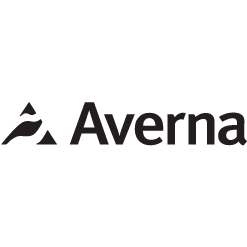



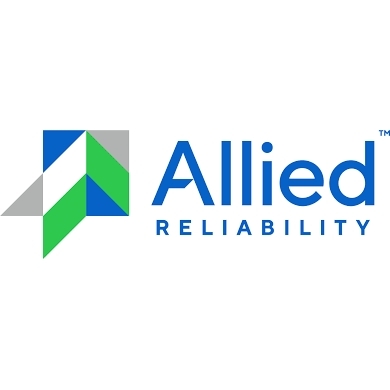

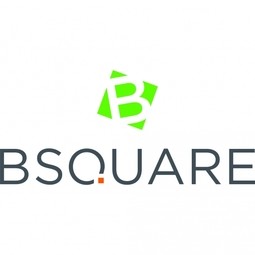







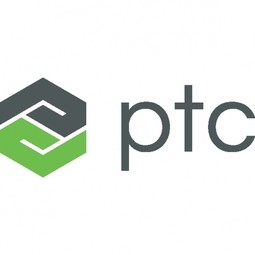




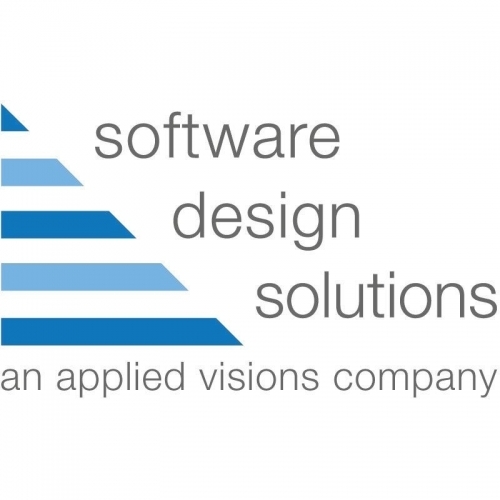

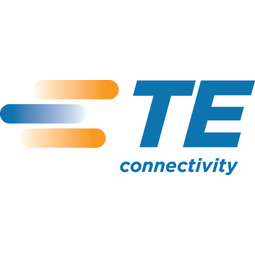

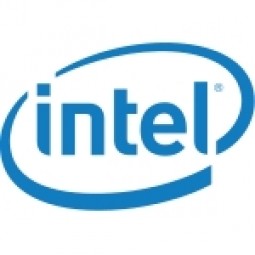

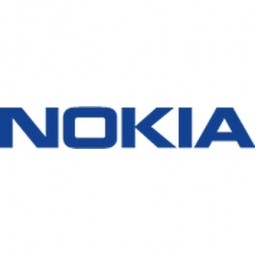
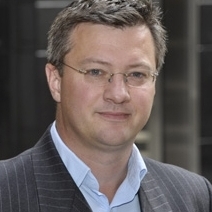
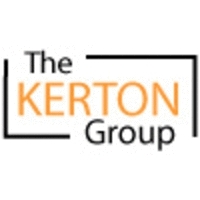

_30.jpg)

